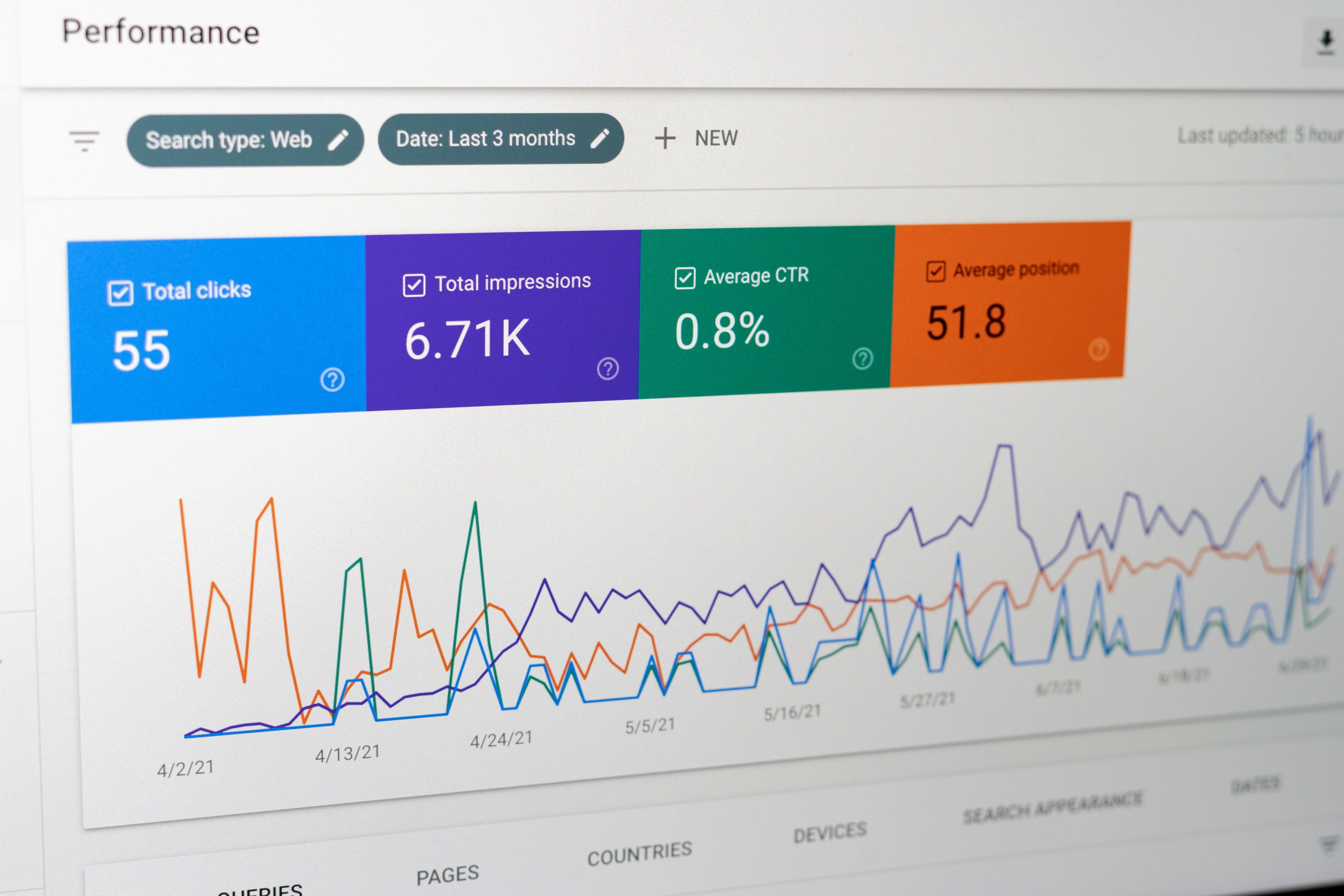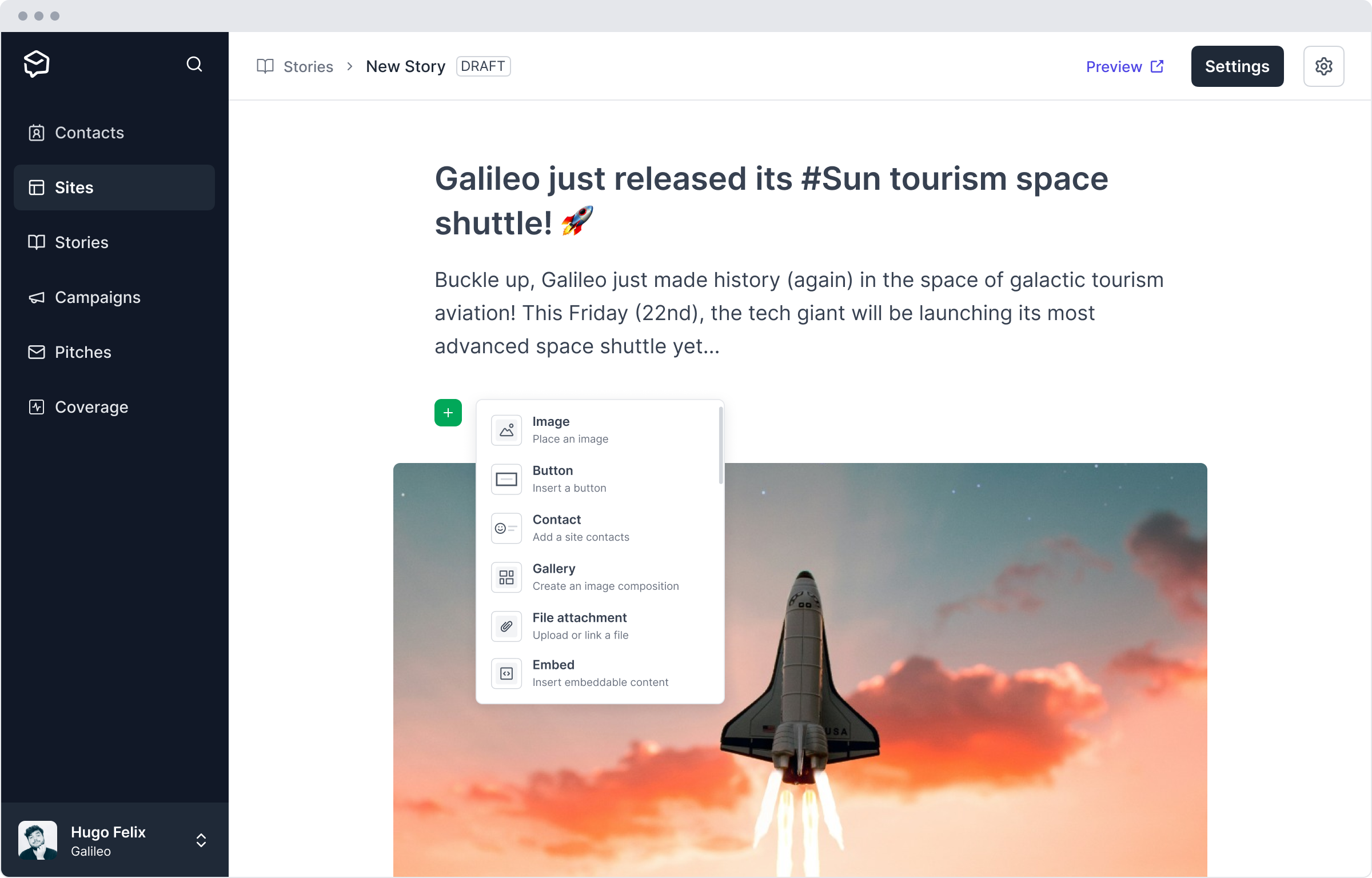Inbound PR: Step-By-Step Strategy Guide (With Examples)
Try this "set it and forget it" approach to finding new clients using the passive power of inbound PR.
Inbound PR sounds like one of those Very Buzzword-y Phrases that doesn't quite seem to make sense when you first hear it. Someone says it in a meeting, and you insightfully nod along while quietly writing it down to Google later.
And to be fair, it's not the world's most intuitive phrase. But it is a fantastically useful strategy. So, what is it? What does inbound PR do for your strategic PR efforts, and why should you care to learn a new expression when you're still learning how to properly use "l33t" as an adjective?
Inbound PR is a business strategy that focuses on creating high-quality content to attract leads, clients, and media coverage without direct outreach. It uses content like blog posts, ebooks, and thought leadership to engage your target audience organically. It's pretty much one of the least invasive channels there is because it requires consumers to opt into your comms.
Basically, inbound PR is about making content that is so good that it generates leads on your behalf. It's getting clients, journalists, and partnership opportunities to come to you instead of constantly having to seek them out yourself.
But, you might be asking, isn't all content supposed to be good?
Yes, sure, of course. Nothing is ever written just to be SEO bait.

But really, inbound PR is great because it generates leads for you, and the content you produce acts as its own sort of social proof. Your future clients will assume that if you know enough about the industry to churn out several thousand words on the subject, you obviously know enough to do great work for them.
As we know, most public relations efforts require just that: effort. It's a lot of pounding the pavement and getting out there and moving and shaking and wheeling and dealing. Rarely do amazing public relations ops just land in your inbox without you trying.
But what if they did?
What if you created content so impactful that people sought you out for whatever you're trying to sell? That is inbound PR.
One of the biggest challenges in modern public relations is proving impact. Traditional media relations can boost visibility, but it’s often hard to measure results or connect PR efforts to tangible business outcomes.
Inbound PR changes that.
By publishing valuable, searchable content – like press releases, thought leadership, and brand stories – you create long-term assets that attract leads, build trust, and generate real, measurable results. It shifts PR from one-off wins to a strategy that supports the bigger picture: consistent growth, stronger relationships, and a clear return on your communications work. And, you can use modern PR tools to track things like traffic to your newsroom, search engine ranking, backlinks, and so on.
In theory, inbound PR seems easier than outbound PR. With outbound marketing, you have to run after and chase down leads, coverage, and media partnerships.
But inbound PR has its own set of issues as well. Namely, it requires a lot of upfront time investment, and once you've penned your content, there's only so much you can do to control the results. Maybe your piece goes crazy viral and everybody loves it. Maybe it just sits there, dormant for thousands of years.
Inbound PR is what some people like to call "slow PR" because, well, it can be pretty dang slow. It takes time to build good content, time to work on sharing that content, time for people to find it, and time for those people to convert.
The initial cost of establishing the content can seem a bit high, but once it is built and put out there into the universe, it's a relatively passive process. Sure, it might require the occasional social or blog post, but that's (hopefully) not too much effort once the groundwork has been laid. We'll get on to this later, but first!
Alright, so the key here is content. What does this magical inbound PR look like in practical terms, and how can you create your own inbound marketing strategy?
Having a dedicated online newsroom is one of the most underrated inbound PR power moves in the PR industry.
A newsroom basically lets you establish a media hub for your brand – a place where journalists, clients, and curious Googlers can find your press releases, company stories, and updates all in one well-organized, search-friendly spot.
Why is this so powerful? Because a newsroom builds credibility.
When someone lands on your site and sees a regularly updated stream of brand news, award wins, customer case studies, and expert commentary, it tells them you’re active, professional, and serious about what you do. It’s like having your own public-facing library of proof that you know your stuff.
Better yet, publishing to a newsroom doesn’t just support your outbound PR – it strengthens your inbound game.
Press releases and brand stories are highly crawlable content, and with the right structure, they show up in search engine results (both the old-timey kind and the AI kind). That means more organic traffic, more backlinks, and more potential leads finding your work on their own, without you having to chase them down.
And let’s not forget the SEO benefits.
A newsroom that publishes relevant content consistently (especially with targeted keywords and rich media) can become a go-to resource for industry updates, building domain authority over time. All while you sleep. Beautiful, right?
If you want to make your own newsroom part of your inbound PR strategy, try Prezly for free. It’s the easiest way to create a branded, SEO-friendly newsroom that works as hard as you do.

Create a custom, ready-to-share newsroom in minutes with Prezly. Just pick a theme, add branding, post your stories, and go live.
People want to be inspired. They want to follow people who make them feel like they are learning and growing just by reading what the expert has to say. Every industry has a set of leaders who not only do the work, but also share their insights with loyal audiences on social media channels and other outlets.
This thought leadership can be incredibly valuable for generating leads. Obviously if you have insightful knowledge, people will actively seek you out to work with you. Building a social media following and digital presence is not easy and doesn't happen overnight. But once you've established yourself as a thought leader in your industry, your future clients will inevitably come to you and seek out your knowledge instead of you having to endlessly send them email pitch after email pitch.
The caveat to thought leadership is that you have to actually be an industry professional and have a hot-off-the-press PR newsletter to say insightful things about your niche. Unfortunately, "personal branding" is the hottest thing right now, so everybody is fancying themselves a consummate industry leader. If you attempt to use this type of inbound PR, make sure you have something different and valuable to say.
Here are a few very clever folk that get this whole personal branding schtick right:

Trying to find PR and comms inspiration on your social media feeds? Look no further than the following thought leaders who will keep you abreast of all things PR, comms, and marketing.
In this day and age where SEO is incredibly (and increasingly, harrowingly) important, providing some sort of linkable, valuable content is a phenomenal inbound PR content marketing opportunity. What is a "linkable asset"? Pretty much anything that people want to link to as an authoritative source on a topic.
For example:
- Statistics, facts, and figures
- Original research
- "State of the _______" reports
- Survey results
- Deep dives and breakdowns of complicated information into non-technical, digestible information
Basically, anything someone else can confidently quote or cite when creating their own content is fabulously linkable content.
A similar caveat to this point as to thought leadership: you need to actually be providing something valuable. If you're representing a brand and your "original industry research" is a survey sampling only your brand's customer base, then that's unlikely to be recognized as reliable unbiased information.

Inbound PR is all about providing value. What provides more value than an ebook that people have to download and figure out how the hell to read because it's a PDF?
Just kidding, we love ebooks around here. (Ok, some of us like ebooks.) An ebook is an amazing opportunity to provide in-depth, authoritative insight into a topic that goes beyond the standard list SEO article. It's also a great way to build brand awareness and position yourself as an educator in whatever field you're in. If people feel like they can learn from you, they will trust you and eventually give you all their money.
Here are a few PR books not just for PR, but by PR.

We asked some seasoned comms professionals which books they'd recommend on the industry, and here are the results
Podcasting, while less passive than some of the other options we've discussed, has so many direct and peripheral benefits for your inbound PR efforts. Not only do people seek out your content because of the entertainment and education value, but you also get exposure to new audiences through the guests you feature. Yes, it requires more commitment to maintain, but so long as you keep showing up, your popularity will only grow with time.
You share your podcast with your audience. Your guest shares it with theirs. You have an awesome chance to have an engaging, industry-specific chat with someone who is equally as passionate about the topic. Win–win–win.
To learn how to make podcasts work for you, check out our PR Roundtable episode on pitching to podcasts with the Media Maven herself, Christina Nicholson.
%20%F0%9F%8E%A7.jpg)
No time to read? Hate words? Listen to these PR podcasts instead to gather insights on trending topics & PR best practice
There's a reason every brand has a company blog these days, and it's not just because people love writing. SEO content helps you rank your website highly on Google, of course, but it also helps you establish authoritativeness in the industry. SEO is a powerful form of inbound PR, especially for people who may not be super familiar with your industry or niche. What better way for people to find your brand than for them to stumble upon it when they use Google? Or… Bing.
The key here, and the thing that differentiates "inbound PR" from "just doing SEO," is quality. You want your content to be optimized for the algorithms, but you don't want it to just be algorithmic garbage. When using your newsroom for inbound PR, make sure you are prioritizing the reader over everything. If someone finds your content and it's not good, it won't generate leads. They'll just assume you're another hack with ChatGPT and a dream.

Boost your press release visibility with SEO. Learn how to use keywords, and more to drive traffic, improve rankings, and maximize impact.
But inbound PR is not just about content creation. It’s about creating valuable content marketing that attracts leads without active chasing.
Creating great content as part of your inbound marketing strategy is only the first part. If you create something great, give them all your knowledge, and they walk away smarter and better – well, that doesn't really help you, does it? The missing piece is having a way to build that audience over time, and the best way to do that? Email addresses.
Which is yet another reason to use your newsroom as a base for your distribution strategy.
Many of our clients use Prezly's newsroom subscription feature to practice the art of inbound PR. Subscriptions are a phenomenal way to not only own your media, but also to stay connected with your audience and build relationships with current and potential clients, journalists, industry partners, nosy aunts, etc.
We include the ability for our users to incorporate subscription signups into all of our client's press releases and PR newsrooms because we know the importance of building and maintaining those relationships. The ability to capture emails and foster those relationships is an important part of effective inbound PR.
Want to check it out and see if Prezly might be a good fit for your inbound PR? Try it for free. 👇
Try Prezly for freeInbound PR works best when it’s built into a clear, repeatable process. Here’s a practical framework any PR team can follow to attract leads and generate results:
Start by identifying who you're trying to reach – journalists, potential clients, industry peers – and what action you want them to take. This will shape your messaging, channels, and calls to action.
Set up a branded newsroom or content hub on your website. This is your central space for press releases, company news, thought leadership, and resources. Make sure it’s SEO-friendly and clearly structured.
Develop content that answers real questions, offers insight, and positions your brand as an authority. Think: blog posts, data reports, ebooks, press releases, and opinion pieces. Prioritize quality and relevance over volume.
Share your content via social media, email newsletters, and relevant communities. Use media relations strategically – pitch your stories to journalists, but always link back to your newsroom to drive traffic and build backlinks.
Add newsletter signups to your newsroom and content pages. Use automated email campaigns to share new stories and deepen the relationship over time. This turns one-time readers into long-term followers.
Prezly sites come with a subscription sign-up form as standard! Build your newsroom in <5 minutes with a 14-day free trial →
Track performance using tools like Google Analytics and Prezly’s built-in PR analytics. Which stories are getting views? Which channels are driving traffic? Use these insights to fine-tune your content and distribution.
Inbound PR isn’t about luck – it’s about building a system that brings the right people to you. With consistent effort and the right tools, it becomes a scalable way to grow awareness, trust, and leads over time.
Inbound PR isn't just about flashy content or trend-chasing. It's about consistently showing up with value – through blog posts, thought leadership, and yes, even good old-fashioned press releases. The key is making that content easy to find, easy to share, and impossible to ignore.
Prezly makes it simple to publish and distribute press releases to your media contacts, build a branded newsroom, and connect with your audience – all in one place.
Want to see how easy inbound PR can be when your tools actually work for you?
Try Prezly for free and start publishing press releases that drive real results.

Start earning more media coverage, free for 14 days
Try Prezly for free now and then keep using it for only $90/month.

